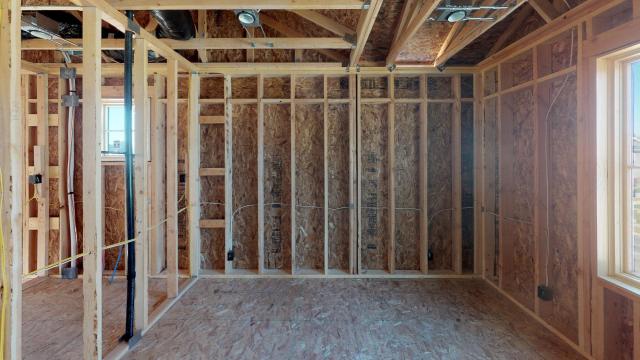Most people enjoy an open floor plan these days, but it’s impossible to achieve that look in older homes without taking down a few walls. Since some of those walls might be keeping the rest of the house standing, it’s important to understand how load-bearing walls work and be able to identify them.
People often ask me if certain walls in their home can be torn out, and it isn’t always easy to tell just by looking at them. Newer houses or those that have previously undergone structural renovation — like adding or removing rooms — are particularly difficult to decipher, so it’s always a good idea to check with an architect or engineer before actually picking up a sledgehammer. (There may be permits required as well, so check with your local council.)
Of course, there are plenty of reasons you may want to have an idea of which walls may be load-bearing, even before you’re at the point of calling in a pro. Here are a few things that can help.
Understand The Structure
A structural wall actually carries the weight of your house, from the roof and upper floors, all the way to the foundation. (The weight that is being transferred down at any given point in the house is called the “load”, hence “load-bearing walls.”) Because this weight is transferred from one level of the house to the next, load-bearing walls are typically directly over one another on each floor. Exterior walls are always load-bearing, and if there is a previous addition involved, some exterior walls may now look like interior walls, but they are almost certainly still load-bearing.
Start At The Foundation
In a house that has an unfinished basement or easily accessible wall, finding the beams — typically a metal I-beam or a multi-board wood beam — is a good indication of where the weight of the house is resting. A wall directly above those beams (and any walls directly above those walls) are probably load-bearing.
Look At The Floor Joists
If you can see the floor joists, either from the basement looking up to the first floor, or from the attic looking down to the floor below, note their direction. A load-bearing wall will often be perpendicular to floor joists. If you see a wall that appears to be holding up an intersection of joists at any point, that wall is likely load-bearing as well. (Not all walls that are perpendicular to floor joists are load-bearing, and a load-bearing wall may occur at a place where there is not an intersection of joists as well, this is why it’s important to look at the overall structure of the house.)
Look Above
If a wall doesn’t have any walls, posts, or other supports directly above it, it’s far less likely that it’s load-bearing. This is also true when looking in the attic. If you have an unfinished attic, but see knee walls (walls under a metre in height that support the roof rafters) those are likely directly above a load-bearing wall as well.
Here’s a great example of looking at all of these different clues to determine if a wall is load-bearing:
For those of us who don’t do structural calculations every day, it’s not an exact science, but understanding the principles behind load-bearing walls can help determine when to call in the pros.
Lifehacker’s weekly Workshop column covers DIY tips, techniques and projects.

Comments
4 responses to “How To Identify A Load-Bearing Wall”
Very dangerous incomplete story here. Nowhere have you mentioned bracing walls that resist racking forces. Brace walls may or may not be vertical load bearing walls. There are very strict australian standards regarding brace restraint walls in a dwelling for good reason. Refer to AS1684.2 for more information rather than an american DIY reference.
This story should be pulled from .com.au. Someone who is not a registered builder in Australia should not be doing this work. This advice is dangerous.
@loganbooker, @lukehopewell, @campbellsimpson. Should probably take a look at what these commentors are saying….
I agree, if you have to read a blog to know what walls you can knock down, then the answer is simple, and the content should be replaced with
“YOU DON’T, GET A PROFESSIONAL”
I know next to nothing about it, but i know its stuff that you shouldn’t screw with unless you have the proper knowledge which cannot be gained from a few paragraphs on a website.